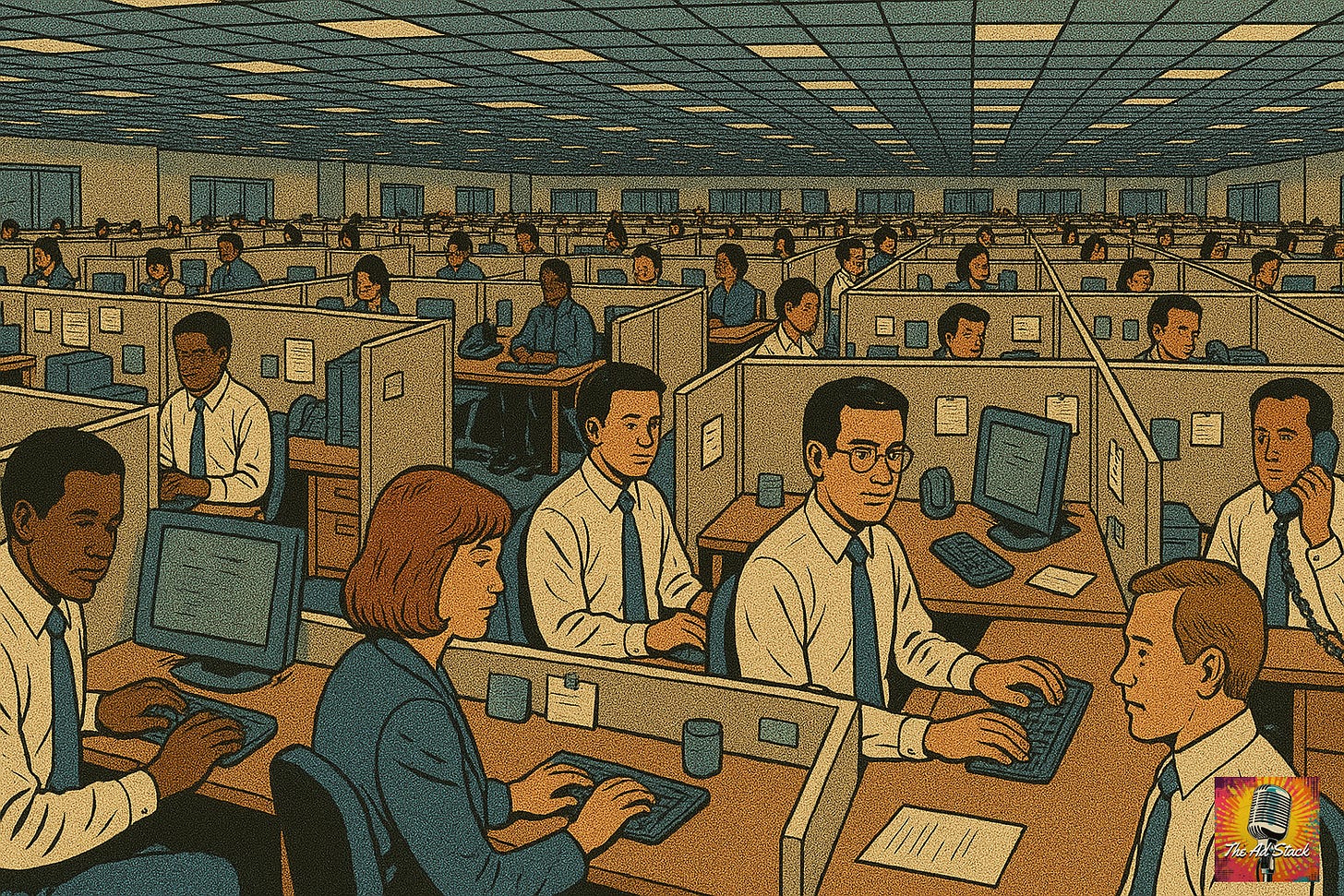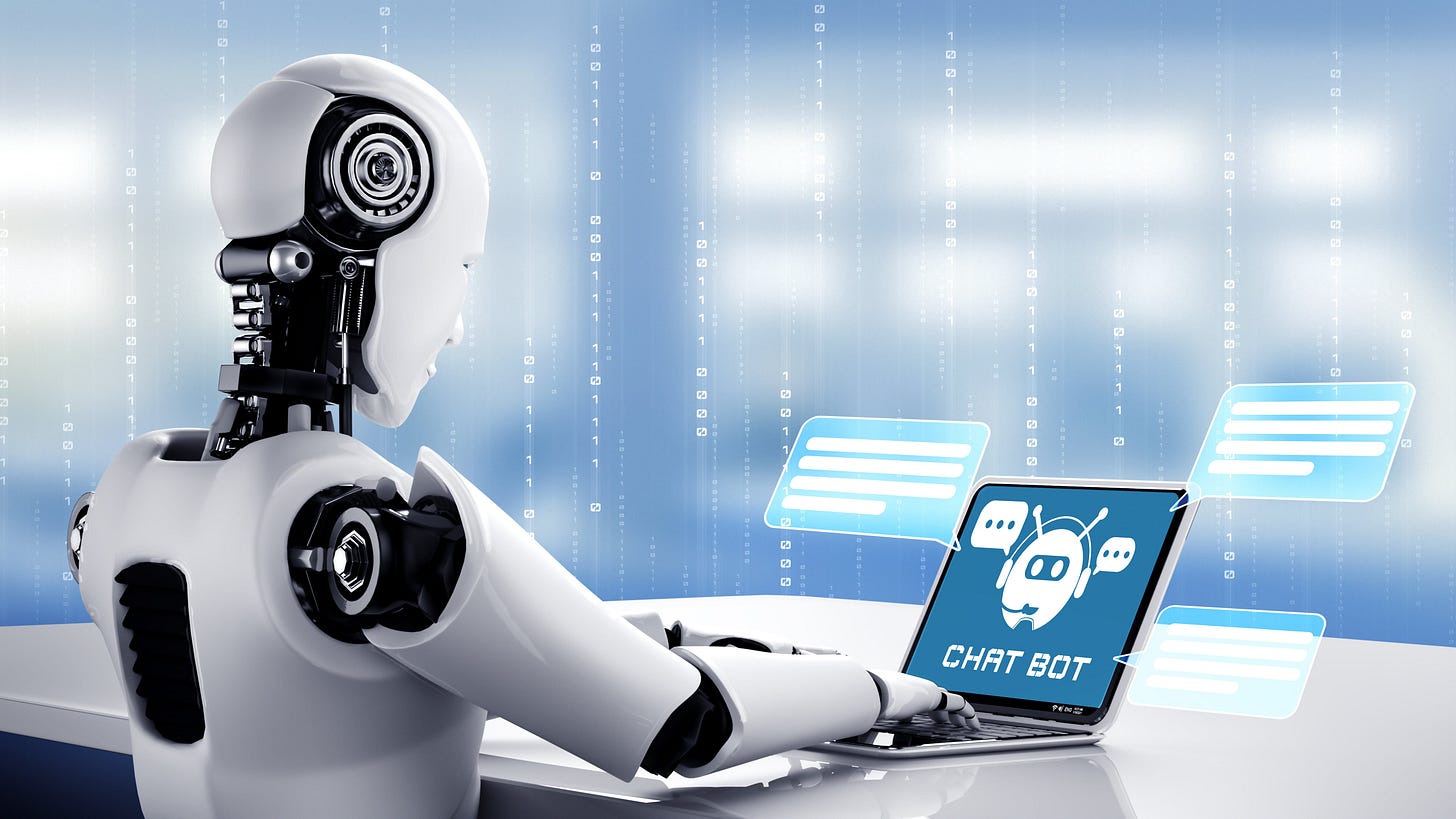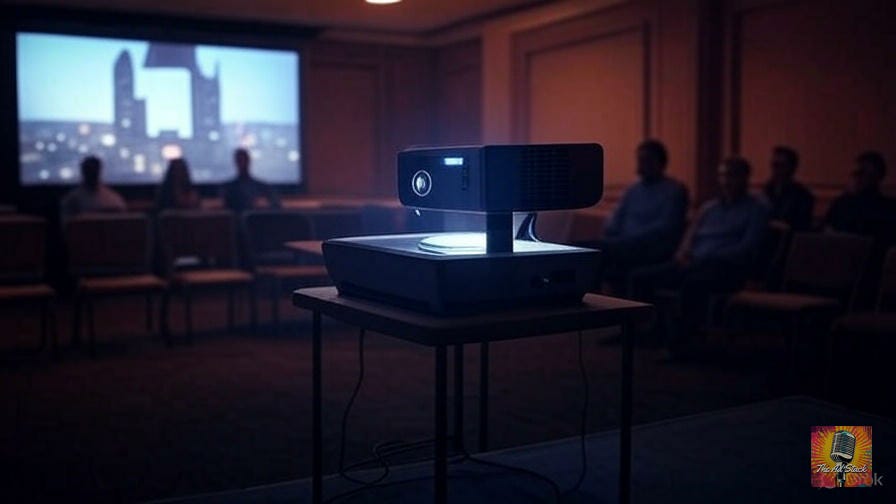68. Who Doesn't Love an Evangelist?
Plus Marketers must learn how to sell to AI. And introducing the Cube Chronicles!
The Rise of Advertising’s AI Evangelists
A new wave of agency leaders—many from non-technical backgrounds—are championing AI adoption inside creative departments. These evangelists act as internal translators, helping staff trust and integrate AI tools into pitches, production, and strategy.
What’s with AI evangelists in ad agencies? One minute you’re in the break room arguing over who makes the best coffee—Starbucks or the swill from the office Keurig—and the next you’ve got someone standing in front of you preaching about neural networks like they’re the second coming of toast.
“Folks,” they say, “this isn’t just budgeting software—this is the future!” What happened to PowerPoint spiels about margin optimization?
Here’s How It All Went Down
Agencies realized they had two problems. First, everybody in creative thought AI was either magic or a conspiracy. Second, the people who actually understood AI lived somewhere offsite, probably dressed in hoodies, and never once asked for a donut. So the agencies said, “Hey, let’s hire someone who can translate AI-speak into human-speak.” And just like that, AI evangelists were born .
Are These Account Guys?
Now, these evangelists aren’t your typical tech bros waving obscure acronyms.
Many come from marketing backgrounds—they know convincing clients to spend millions on snack-sized video spots is an art form. They’ve been in the trenches, they’ve seen budgets evaporate faster than a sneeze in a wind tunnel, and they still managed to throw a halftime show for a breakfast cereal campaign. If anyone knows persuasion, it’s these folks.
So the agencies hand them a shiny new job title—AI Evangelist, AI Champion, Chief Prompt Officer (I wish)—And suddenly they’re leading internal training sessions!
Picture a room full of copywriters, graphic designers, even the guy in the corner still figuring out how to set up his email signature, all crowded around a screen. And the evangelist is there, markers in hand, explaining: “See, you just feed the AI a prompt like ‘Create a witty tagline about gluten-free granola.’ It’s like ordering a pizza, except you get words instead of pepperoni.” It’s part classroom, part therapy session—because half these people look like they’re about to faint .
The Kicker
But here’s the kicker: it works. The first time they see the AI spit out five solid tagline options in under ten seconds, you’d think they’d discovered fire. “Holy cow!” they exclaim. “This thing is fast!” They start riffing—“What if we gave it a brand voice?”—and before you know it, they’re tweaking the prompt to nail the tone, voice, length, and even the emoji count. Suddenly the entire creative department is in on the joke, marveling at how they used to scribble dozens of ideas on whiteboards and now they’ve got 50 in under a minute.
And it’s not just taglines. They’re feeding AI briefs, style guides, brand bibles—everything but the kitchen sink. They’re telling the model, “Here’s our brand tone: friendly but not gushy, witty but not sardonic.” The AI churns out copy that actually feels human—sort of like ordering a latte with just the right amount of foam and a perfectly straight barista signature.
The evangelists are up there, chest puffed out, proclaiming, “It’s all about the data!” But we all know it’s about one thing: spending less time banging your head on the keyboard and more time on the good stuff—celebrating with doughnuts .
Ok, Enough With the Panic Attacks
Now, before you get worried about your job, let’s put things in perspective. The AI evangelists aren’t there to replace you; they’re there to replace the parts of the job you hate. You know, the grunt work—the endless resizing of logos for every social platform, the tedious A/B tests on headers, the millionth revision of a stock photo caption. They should move expense reports and time sheets to the top of that list as well.
The evangelist steps in and says, “Hey, you can have the AI handle that. Let me show you how.” It’s like discovering electricity after living by candlelight—sure, it’s scary, but once you flip the switch, you’re not going back.
These evangelists also act as gatekeepers. They sniff out the shiny new AI tool du jour—some platform promising to generate video, some magic algorithm that turns text into 3D avatars—and they run it through their internal lab. They say, “Hey creative team, we messed around with this for a week. Here’s what works, here’s what’s utter garbage, and here’s the one feature you actually care about.” Because if you gave every new AI toy to the designers, you’d have 17 different platforms, 50 APIs, and one very confused CTO.
But the evangelists do more than pick winners and losers. They build the confidence muscle. They know people are suspicious—“Is this thing going to steal my job? Are the robots coming for me?” So they start small: “Let’s let the AI draft our next email newsletter subject line. If it flubs, we’re safe. If it nails it, we’ll celebrate.” Before long, you’ve got the entire department asking for spot bonuses for the AI, like it’s an intern who showed up early with coffee.
Oh, the Clients
And guess what? The clients love it. When you tell them you’re using AI tools, they nod sagely, like you’ve just described a self-driving car that also makes edibles. It sounds futuristic, it sounds efficient, it sounds like you’re one step ahead of the competition. The evangelists are the ones who craft that pitch: “We leverage AI to accelerate production by 30%. We maintain full creative control, with algorithmic suggestions custom-tailored to your brand.” It’s like selling the Brooklyn Bridge—except this time, people actually buy it.
So what’s the takeaway here? AI evangelists are the unsung heroes—or maybe the hype guy—of the modern agency world. They’re the translators, the cheerleaders, the lab techs, and the bouncers, all rolled into one. Without them, AI in an agency looks like handing a caveman a quantum computer; with them, it’s more like handing a chef a food processor. You still have to know the recipe, but now you can mix it in half the time and clean up before lunch .
Bringing It Home
And that, my friends, is the deal with AI evangelists in ad agencies. They’re here, they’re loud, and they’ve got the best donuts. So next time you see one in the corridor, give them a nod—you might just save yourself from a whiteboard meltdown.
Sources: Marketing Brew, Adweek Profile: AI Champions in Adland, Digiday Feature
The Cubicle Chronicles
Overheard and Unfiltered This Week In Your Agency
“This isn’t a re-org, it feels more like choose-your-own-adventure layoffs”
I don’t exactly get it but it feels strangely accurate.“Built an app that applies to 800 jobs/day. Would love your thoughts”
“Someone in my Zoom meeting just said to the entire group, ‘My camera’s off because I’m disassociating.’ ”
Marketers must learn how to sell to AI, not humans!
After years of trying to emotionally manipulate consumers into buying organic dish soap and heritage denim, marketers have thrown in the towel—on people.
Summary:
This is a synopsis on the recent Ad Age Opinion.
Not human beings with wallets and questionable judgment, but AI agents. You know, the soulless, tireless bots designed to make “optimized” decisions on our behalf.
According to Chan Suh in Ad Age, marketers are no longer selling to you. They're selling to your algorithm. That’s right—your shopping, your preferences, your entire digital consumer soul has been outsourced to a code blob with a spreadsheet for a heart. And marketers? They’re adapting, fast.
To Hell With Catchy Slogans
Gone are the days of catchy slogans and heartstring-tugging ads. No more “Just Do It.” Now it’s “Just Comply with Machine Learning Inputs.” These AI agents don’t care about emotional resonance. They don’t care if a commercial made you cry, laugh, or remember your dead goldfish. They want efficiency. Data cleanliness. Price-to-performance ratios. In short, the least fun aspects of humanity, but cranked up to 11.
These agents aren’t assistants. They’re replacements. They read reviews, compare specs, consider logistics, and decide what to buy for you before you even realize you’re out of toothpaste. And do they ask your opinion? Of course not. You’re the human. You’re biased. You get distracted by shiny things and nostalgia. The AI agent? Cold. Efficient. Loyal only to the algorithm.
The Marketing Ballet
So now marketers have to pivot. There is much to do. They must learn how to impress machines. Not you. Not your mom. Not your trend-obsessed teenage cousin. Just machines. That means forget storytelling. Forget brand loyalty. Forget the “vibe” of your product. It’s now about structured metadata, product feed optimization, and being selected by a bot that doesn’t even have taste buds.
And what about creativity? You remember creativity, right? It’s that thing we used to celebrate in ads—clever jokes, bold visuals, original ideas? Yeah. That’s dying. Machines don’t reward creativity. They reward accuracy. Relevance. System integration. Your quirky campaign with talking animals? That’s adorable. The AI just flagged it as “low confidence.”
Obsolescence
The article basically says if marketers don’t change fast, they’ll be obsolete. And not the cool kind of obsolete, like vinyl records or handwritten letters. The kind where you’re replaced by a plugin that runs 24/7 and doesn’t demand lunch.
But hey, there’s a silver lining! If you completely reinvent your job, abandon everything you know, and start thinking like a machine, maybe you’ll still have a role in this future. You just have to learn to “market to the AI.” Not to people who care, but to the emotionless procurement agents your customers will soon outsource their lives to.
But What of the Brands?!!!
Meanwhile, brands—remember them? Those warm, fuzzy entities people used to feel loyal to? They’re in trouble too. AI doesn’t care if you’re a legacy brand. AI doesn’t feel guilt when it picks the off-brand cereal. AI just wants the best input at the best price, thank you very much.
So here we are. The future of marketing isn’t storytelling. It’s code compliance. The audience isn’t people—it’s processors. And your job isn’t to inspire anymore. It’s to be selected.
The consumer journey? That’s over. Now it’s just a crawl through a database.
Welcome to the algorithm’s world. You’re not the hero of the story anymore. You’re a datapoint.
Source: Ad Age Opinion
FWIW - we covered this in an earlier edition; marketing to our customers’ agents - this past January. So keep it here.
Before you go ... help!
Please forward this to three friends, enemies, colleagues, or someone you met today.
Like and Re-stack it below so others can find it!
Share this post on Substack and other social media sites.
Drop a comment below. If enjoy it, if it sucks … perhaps drop a Haiku about programmatic AI. Your call.













